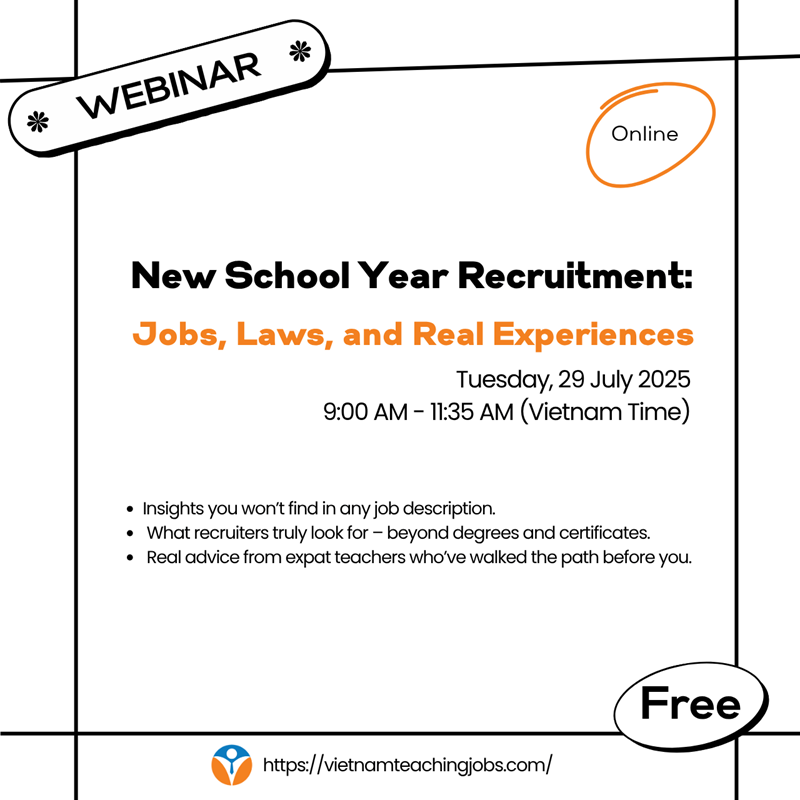


In 2024, crafting an effective motivation letter remains a crucial skill for individuals seeking academic, professional, or personal opportunities. This article will guide you through the essential steps of composing a compelling motivation letter. From understanding its purpose to exploring practical examples, VTJ will delve into the art of conveying your aspirations, experiences, and genuine passion to achieve your goals.

A motivation letter is a document that accompanies your application and provides insight into your personal motivations for pursuing a particular opportunity. It serves as a platform for you to express your enthusiasm, qualifications, and goals, allowing the reader to understand why you are the ideal candidate for the position or program you are applying to. A well-written motivation letter not only highlights your relevant skills and experiences but also demonstrates your passion, commitment, and alignment with the values and objectives of the organization or institution you are targeting. It is a powerful tool that can significantly influence the decision-making process and set you apart from other applicants.
Explore More Teaching Tips: Create a Winning CV for Teachers in 2025 (Templates & Examples)

A motivation letter can be used in various situations where you want to convey your passion, qualifications, and aspirations. Here are three common scenarios where a motivation letter is often required:
When applying for admission to a university or a specific program, a motivation letter allows you to showcase your academic achievements, extracurricular activities, and future goals. It provides an opportunity to explain why you are interested in the program, how it aligns with your career aspirations, and what unique qualities you can bring to the university.
When applying for a job, a motivation letter complements your resume by providing additional context and highlighting your relevant skills and experiences. It allows you to explain why you are interested in the position, how your qualifications make you a suitable candidate, and what you can contribute to the organization. A well-crafted motivation letter can demonstrate your enthusiasm and set you apart from other applicants.
Motivation letters can also be used in various other situations, such as applying for scholarships, internships, volunteer positions, or exchange programs. These letters serve as a platform to express your motivations, goals, and how the opportunity aligns with your personal and professional development.
Read more: Teacher Cover Letter Examples and Templates for Any Teaching Position

An ideal motivation letter is a one-page document that introduces yourself, shares your story, and demonstrates your interest in the position or organization you are applying to. There are two main approaches to structuring your motivation letter:
To ensure your motivation letter is clear, concise, and impactful, it is important to follow a well-structured format. Here is a typical structure for a motivation letter:
Discover Related Guides: Why do you want to work at this school? 10 Sample answers

Writing a compelling motivation letter requires careful planning and attention to detail. Here are five steps to help you craft an effective motivation letter:
Before you start writing your motivation letter, create an outline to organize your thoughts and structure your letter. This will serve as the foundation of your letter and help you organize your thoughts. Identify the main points you want to address, such as your goals, qualifications, and reasons for applying. Having a clear structure in mind will make the writing process smoother.
The introduction is your chance to grab the reader’s attention from the start. Begin with a brief introduction of yourself and the purpose of your letter. Mention the specific opportunity you are applying for and express your enthusiasm for it. A well-crafted introduction sets a positive tone for the rest of the letter.
In the body of your motivation letter, expand on the key points from your outline. Address why you are interested in the opportunity, what makes you a strong candidate, and how your background and experiences align with the requirements. Provide specific examples to support your claims and emphasize your passion and commitment.
Continue Learning: Why do you want to be a Teacher? 15+ Example Answers
The conclusion of your letter should summarize your main points and reiterate your enthusiasm for the opportunity. Leave a lasting impression by highlighting how you can contribute to the organization or program. Thank the reader for considering your application and expressing your hope for a positive outcome.
Explore More: 20+ Common teaching job interview questions & answers
After writing your motivation letter, take the time to proofread it carefully. Check for any grammatical or spelling errors, and ensure that your ideas are clear and concise. It’s also a good idea to have someone else review it for feedback. A well-edited and error-free letter reflects your professionalism and attention to detail.

To write a standout motivational letter among other applicants, it is important to avoid generalizations and add depth by tailoring it to the specific organization and program/position you are applying for. Here are some guidelines to follow:
Related Guides: Where do you see yourself in 5 years as a teacher?
See More Strategies: 50+ Teaching Assistant Interview Questions (And Examples)
[Your Name] [Your Address] [City, State, ZIP Code] [Email Address] [Phone Number] [Date]
[Recipient’s Name] [Recipient’s Position] [Organization/Institution Name] [Address] [City, State, ZIP Code]
Dear [Recipient’s Name],
Introduction: State the purpose of your letter and the specific program or position you are applying for. Express your enthusiasm and interest in the opportunity.
Paragraph 1: Briefly introduce yourself and provide an overview of your educational background, relevant experiences, and skills. Highlight any achievements or accomplishments that are relevant to the program or position.
Paragraph 2: Share your personal motivation for applying to the program or organization. Explain how your interests, goals, or values align with theirs. Use specific examples or anecdotes to illustrate your motivation.
Paragraph 3: Discuss your future aspirations and how the program or position will contribute to your professional or personal development. Explain how you plan to utilize the knowledge and skills gained from the opportunity.
Conclusion: Summarize your main points and reiterate your enthusiasm for the opportunity. Express gratitude for the reader’s time and consideration. Provide your contact information and indicate your availability for further discussion or an interview.
Sincerely,
[Your Name]
Explore More About Teaching Job: 35+ Questions to Ask in A Teacher Interview to Impress Employer
Dear Mr. David,
I am writing to express my strong interest in the multimedia design and communication degree at Seattle University. My name is Stephanie Rina, and I am currently a high school student at Seattle City High School. With a passion for computer studies and visual art, I believe that this program aligns perfectly with my career aspirations.
Aspiring to become a web designer, I am eager to delve deeper into the world of multimedia design. I believe that your course will provide me with valuable insights into the digital design process and how websites can effectively communicate visual imagery to engage consumers.
What fascinates me the most is the ability of colors and images to evoke emotions in viewers. I thoroughly enjoy experimenting with the power of color and imagery, and I believe that I possess a natural creative flair. I am confident that Seattle University will provide me with the platform to further develop my skills and enhance my design abilities.
Seattle University’s reputation for academic and sporting excellence greatly appeals to me. I admire the school’s commitment to nurturing students’ potential both inside and outside the classroom. As a socially active individual, I have actively participated in various extracurricular activities, including the school band and softball team. I believe that my diverse interests and involvement make me a well-rounded candidate for your institution.
By studying at Seattle University, I am confident that I will not only develop my aptitude for design but also have a fulfilling and enjoyable experience. I am open to embracing all the opportunities that life at Seattle University has to offer, whether it be on the sporting field or in other areas of personal growth. I am excited about the prospect of pursuing my multimedia design and communication degree at your esteemed institution.
Thank you for considering my application. Should you have any further inquiries, please do not hesitate to contact me at stephanie_rina@email.com.
Sincerely,
Stephanie Rina.
Read more: 40+ ESL Teacher Interview Questions & Answers
Crafting a compelling motivation letter requires a combination of sincerity, clarity, and strategic thinking. By following the guidelines and examples provided, applicants can effectively showcase their unique qualities, experiences, and aspirations. Remember, a well-written motivation letter not only demonstrates your commitment and enthusiasm but also sets you apart from other candidates. So, take the time to reflect on your goals, articulate your motivations, and present yourself in the best possible light. With a strong motivation letter, you can confidently embark on your journey towards achieving your dreams and securing the opportunities that await you.
Discover Related Guides: “What Are Your Salary Expectations?” – 10 Sample Answer
A cover letter is typically submitted with a job application and serves as a brief introduction to your qualifications and interest in a specific job position. It highlights relevant skills and experiences and is often more focused on how your background matches the requirements of the job. On the other hand, a motivation letter is often used for academic applications (e.g., university admissions, and scholarships) and focuses on explaining your personal motivations, goals, and reasons for applying to a specific program or institution. It delves into your aspirations and passion.
Read more: 40+ Preschool Teacher Interview Questions (+Answers)
The submission process for a motivation letter depends on the specific application requirements. It is usually submitted directly to the organization or institution to which you are applying. This can be done through an online application portal, email, or by mail, as specified in the application instructions.
Explore More: 40+ School Principal Interview Questions (And Example Answers)
Whether a motivation letter is a requirement depends on the application guidelines set by the institution or employer. Some academic programs, scholarships, and job positions may require a motivation letter as part of the application process. In other cases, it may be optional.
Related Guides: Teacher Strengths and Weaknesses: How to Answer?